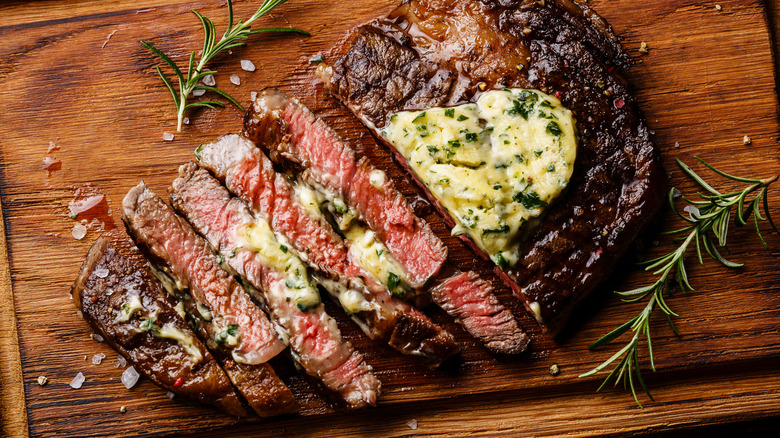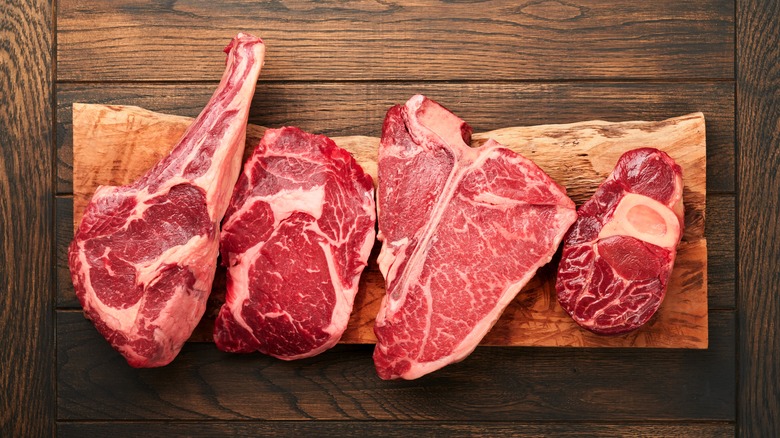The 5-Minute Step That Will Perfect Your Pan-Seared Ribeye Steak
Ribeye steak – beef taken from the rib section of a cow — is tender, juicy, and extremely flavorful. In fact, it's typically considered the most flavorful cut of steak due to the high amount of fat marbling in this primal cut. If you think only professional chefs can cook a mouthwatering ribeye, think again. The key to nailing that restaurant-worthy flavor is to baste the steak in butter for the last 5 minutes of cooking.
Whether you're a professional chef, home cook, or gourmand, the characteristics of the perfect steak remain the same: A deep, umami-packed char on the outside and juicy, tender beef on the inside. Butter-basting your steak is one of the best ways to boost the flavor of your already flavorful cut of steak, resulting in the ultimate restaurant-quality ribeye that'll have you eating in more often. Besides adding tastiness to almost anything you put it on, butter helps create that glorious Maillard reaction that results in a perfectly caramelized crust (and is also the reason why meat changes color as it's cooked).
When basting your pan-seared steak, the trick is to add the butter towards the end of cooking so that it doesn't burn. Once you've reached those last few minutes of cooking, reduce the heat and add the butter (and any aromatics you prefer, like garlic, rosemary, and thyme). Spoon the melted butter and herbs over your steak as it cooks for a couple of minutes, then flip the steak and baste for a couple more.
Other tips for perfect ribeye
When buying your steak, whether you choose bone-in or boneless ribeye is largely up to personal preference. While some claim that bone-in ribeye is more flavorful because the tasty bone marrow transfers into your steak, food researchers have debunked this idea, arguing that there's no perceptible difference in flavor between bone-in and boneless. However, the bone does act as a insulator for the steak as it cooks, keeping the meat, particularly the sections close to the bone, more tender.
Another tip for tasty ribeye is to let it come to room temperature before searing it to ensure that it's cooked evenly throughout. If some parts of the uncooked steak are still cold or frozen, it'll be difficult to reach a uniform temperature when cooked (in other words, you could end up with steak that's partially rare or partially well-done). It's also advisable to use a cast iron skillet to cook your ribeye since they expertly retain and transfer heat to your food. Pre-heating your cast iron skillet will give you the high heat necessary for the perfect char.
Finally, after you're done cooking your steak, allow it to rest for around 10 minutes before serving. Resting your steak allows the muscle fibers to loosen and release juices throughout the meat, resulting in a more flavorful, tender bite. The drawback of ribeye steak is that it is a more expensive cut. Fortunately, you can make an affordable ribeye swap for a leaner steak night.

